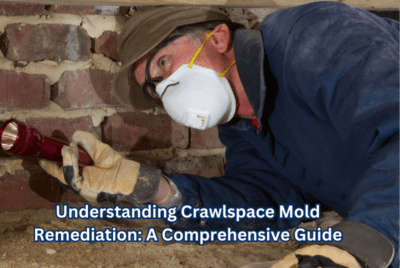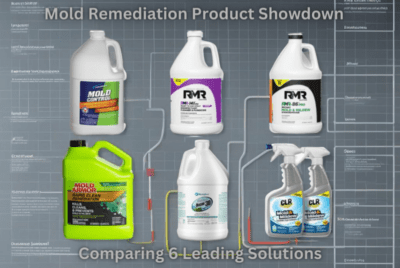Pink Mold: Your Guide to Effective Mold Remediation
Hey there, fellow mold warriors! If you’ve stumbled upon this article, chances are you’re no stranger to the pesky pink intruder that has invaded your living spaces. Don’t worry, you’re not alone on this quest to conquer the notorious pink mold. In this guide, we’ll dive deep into the realm of pink mold, understand its quirks, explore the health concerns it raises, and most importantly, equip you with the knowledge and strategies to bid it farewell. So, let’s roll up our sleeves and get ready to battle the pink menace!
| Key Takeaways |
| Pink mold (Aureobasidium pullulans) thrives in damp environments like bathrooms and kitchens. |
| Pink mold can pose health risks, especially for those with weakened immune systems. |
| DIY methods can work for small infestations; professional assistance is recommended for extensive growth. |
| Preventive measures like proper ventilation, prompt leak fixing, and maintaining low humidity can thwart mold growth. |
Understanding Pink Mold
Before we charge into battle, let’s get familiar with our opponent. Pink mold, scientifically known as Aureobasidium pullulans, is a sneaky type of mold that can be found lurking in damp and humid environments. Despite its name, this mold isn’t exactly pink – it can range from light pink to dark red or even grayish in color. You’ll often find it thriving in bathrooms, kitchens, and other moisture-rich areas.
Characteristics of Pink Mold
Pink mold is not confined to a single species but rather encompasses various fungal organisms within the Aureobasidium genus. This diversity contributes to its ability to colonize a wide range of surfaces, making it a persistent issue in many households. When observed under a microscope, pink mold typically appears in clusters of small round spores, resembling powdery spots. These spores can easily become airborne, posing a risk to indoor air quality.
Despite its relatively benign appearance, pink mold should not be underestimated. While it may not be as toxigenic as other molds, prolonged exposure to its spores can lead to health issues, especially for individuals with allergies, respiratory conditions, or compromised immune systems. Additionally, its growth can contribute to property damage, staining, and an overall decline in indoor air quality.
Pink mold’s ability to thrive in environments with high humidity levels and its resilience to basic cleaning methods necessitate a comprehensive approach to mold prevention and remediation. By understanding its habits, identifying its presence, and implementing effective strategies, you can successfully tackle the challenge of pink mold and maintain a healthy living space for you and your loved ones.
Health Risks Associated with Pink Mold
Now, why should we be concerned about this seemingly innocuous mold? Well, it’s not all rainbows and unicorns. Pink mold can pose health risks, especially to those with weakened immune systems, respiratory issues, or allergies. Even if you’re not directly affected, it’s crucial to address mold issues promptly to prevent them from escalating into bigger problems.
Importance of Mold Remediation
Picture this: You’re the ruler of your cozy castle, and pink mold has decided to crash the party. Besides the unsightly stains, mold can weaken structures and damage property. Moreover, mold spores floating in the air can lead to indoor air quality degradation. This is where mold remediation sweeps in like a valiant knight, saving the day by restoring both your property and your peace of mind.
DIY Mold Remediation vs. Professional Assistance
The million-dollar question: To DIY or not to DIY? While your inner DIY enthusiast might be raring to go, mold remediation isn’t always a walk in the park. DIY methods can work for small-scale infestations, but for extensive growth, calling in the pros is your best bet. Professionals have the experience, equipment, and know-how to tackle mold with precision.
Conclusion
And there you have it, our comprehensive guide to pink mold and its defeat. Armed with knowledge and practical strategies, you’re ready to take on mold-related challenges headfirst. Whether you’re a homeowner, renter, or property professional, remember that prevention and prompt action are your best allies. So go forth, fellow mold warriors, and may your homes stay mold-free and your spirits high!
FAQs about Pink Mold and Mold Remediation
- What exactly is pink mold, and how does it differ from other molds?
Pink mold, scientifically known as Aureobasidium pullulans, is a type of mold commonly found in damp environments. Its color can range from pink to red or gray. Unlike other molds, it prefers humid spaces like bathrooms and kitchens. - Are there any DIY methods I can use to remove pink mold?
Yes, for small-scale infestations, you can mix water and soap or vinegar to scrub away pink mold. However, for extensive growth, it’s advisable to seek professional mold remediation services. - How can I prevent pink mold from reappearing after remediation?
To prevent pink mold recurrence, ensure proper ventilation, fix leaks promptly, and maintain low indoor humidity. Regular cleaning and monitoring moisture levels are essential. - Are there eco-friendly ways to deal with pink mold?
Absolutely! You can use natural solutions like hydrogen peroxide, baking soda, or tea tree oil to combat pink mold effectively while being environmentally conscious. - Can mold problems have psychological effects?
Yes, dealing with mold problems can lead to stress and anxiety. It’s essential to address the emotional impact alongside the physical aspect of mold remediation. Lean on support systems and practice self-care.
Remember, knowledge is your strongest weapon in the battle against pink mold. Stay informed, take action, and enjoy a mold-free living space!




